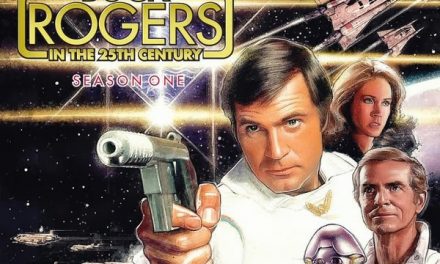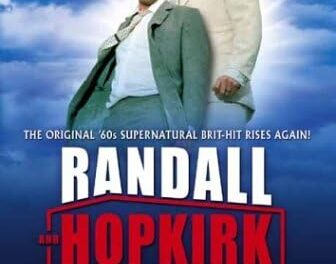In 2006, when I started out in television studies, the discipline was reckoning with the impact of HBO’s entry into the marketplace for television drama. Academics tended to avoid words like ‘revolution’ but journalists flung them about with abandon, and contentious debates about ideas like ‘Quality’ (McCabe and Akass, 2007) and ‘Complexity’ (Mittell, 2006) were driving much of the conversation in TV studies.
My PhD examined the narrative structures of television drama made for different platforms in the midst of this period and, if I may grossly oversimplify my own findings for a moment, it argued that not that much had really changed. Genre, form, serial structure and the norms of storytelling in ‘premium’ or ‘high-end’ television intensified, but along lines which had been clearly established throughout the 80s and 90s.
That study, which had felt achingly current for the first couple of years in which I had pursued it, turned into a historical curio before it came back from the bindery. By then, television was beginning to reckon with another series of changes – a shift from analogue airwaves to digital streaming which promised an even greater shake-up than anything the ‘Quality’ boom had managed.
Yet as digitally-distributed television has quickly settled in to become the new normal, I keep feeling echoes of my own earlier scepticism about that first ‘revolutionary’ moment in my life as a television scholar. Whenever I hear a reviewer or a fan or another scholar holding forth on what’s different about contemporary television, a little voice at the back of my head asks, ‘But how different is it, really?’
So, in this blog post, and hopefully in a few others to come, I want to examine some of the continuities between contemporary made-for-digital-distribution television drama and earlier practices and forms from more network and cable-centric moments of television history. This week I particularly want to look at the ways that the stand-alone episode persists in television structures which are otherwise rhetorically positioned as unified texts.
One Long Movie?
Back in 2013, when Kevin Spacey was still getting invited to speak at things, his lecture at the Edinburgh Television festival threw down a gauntlet on behalf of the era of internet-distributed television. Coming off the back of an award studded film career and a decade in charge of the Old Vic Theatre, Spacey’s dual role as the cod-Shakespearian Villain Frank Underwood, and Netflix Spokesperson, offered a conservative imprimatur of Quality to the vanguard of the next phase of television production and distribution. There was also something familiar in the promises he made about how this wave of television would distinguish itself from what had come before.
Spacey explicitly cast House of Cards (Netflix, 2013-18), his Netflix Original, and by extension, Netflix Originals in general, in the tradition of previous generations of ‘quality tv’. His speech called out to the ‘greatest hits’ of the quality tradition: prestigious short-run British television mini-series; Grant Tinker and MTM; Steven Bochco and Hill Street Blues (NBC, 1981-87); and HBO and the post-2000 boom in high-end television drama. However, Spacey also pointed to the differences which would come to characterise the discourse around internet-distributed television in general, and Netflix in particular: the avoidance of the pilot process; the creative freedom accorded to showrunners; and the season-drop mode of delivery which allows or encourages bingeing.
Among the most persistent of the discourses Spacey contributed to in that speech has been the one which positions the season-dropped, made-for-bingeing television drama as an inviolate textual whole, usually in explicit contrast to the compromised, fragmented texts of more ‘ordinary’ television dramas. The now-trite descriptions of television series as ‘novelistic’ or like ‘one long movie’ are familiar enough that the critical backlash against them is in full swing, with writers like Alan Sepinwall (2015) and Kathryn VanArendonk (2017) calling them out for the harm they’re doing to high-end television. Yet critiques like these still fundamentally concede that the ’one-long-movie’ paradigm is a thing which is happening to television, and that’s where that sceptical little voice chimes in for me. Because, whatever showrunners or streaming-service execs say about their shows being ‘one long movie’, in many, if not most cases, a closer look at the way their shows tell their stories reveals something else.
Alma Maters and Lost Sisters
By way of providing some examples, let’s examine two episodes of Netflix Original series which might seem to merit the ‘one long movie’ tag: the eighth episode of Season One of House of Cards, in which Frank visits his old Military School, and the much-maligned Lost Sisterepisode (2:7) of Stranger Things (2016-Present), in which Eleven travels to Chicago and connects with another survivor of the laboratory where she was raised.
Each of these episodes sees our central characters displaced from their usual habitus, and through being in a different environment and undergoing various trials, each central character (or our perception of them) is transformed. In House of Cardswe learn about the hard, intolerant world which forged a young Frank Underwood, and gain an unexpected insight into his sexuality as we learn that he and a fellow classmate were lovers during their time at the conservative all-male school. In Stranger ThingsEleven is morally tested when she meets a group of people who understand her history and her abilities and who help her to learn to harness her full potential, but who also ask her to join them in their quest for revenge.
The episodic structure of these stand-alone stories owes far more to conventional television than to anything derived from the novel or the feature-film. There is something of the formal restraint of the ‘bottle episode’, a relic of low-budget network television, in the way each of these episodes temporarily relocates their characters in order to reveal new facets of them. And while both episodes contribute to the wider serial narratives of their respective shows, they do so in the manner Greg Smith described as ‘resolution without progress’ (2008:85).
Smith argued that the episodic closure present within serialized television narratives can work to create turning points which structure character arcs. Within the context of the episode the characters overcome obstacles and learn lessons which may not directly impact on the wider serial plot but which nevertheless reshape the character and provide the drive for further developments.
In this regard, the placement of these stand-alone episodes in their respective series is particularly notable, with each one coming as an interruption just as the season’s plot is accelerating to its climax. We will remember Frank’s vulnerability and tenderness, and be conflicted by it as he makes his final violent grab for power at the season’s end. And we will appreciate Eleven’s choice to be with her friends in Hawkins all the more for knowing that she had another choice to make. These are crucial moments for character development, but they are also moments profoundly grounded in the structures and rhythms and histories of serial television narrative. They disrupt the unified, ‘novelistic’ or ‘filmic’ flows of their series in order to establish turning points. Effectively, they break these inviolate texts into acts.
And, as I’ll argue in my next instalment, this use of stand-alone episodes to construct acts within made-for-bingeing television is part of digitally-distributed TV’s ongoing attempt to negotiate its relationship to another relic of analogue television: the season.
REFERENCES:
McCabe, J. and Akass, K., 2007. Quality TV: Contemporary American Television and Beyond. I.B. Tauris: London and New York.
Mittel, J., 2006. ‘Narrative Complexity in Contemporary American Television’ The Velvet Light Trap. Number 58. Pp. 29-40.
Sepinwall, A., 2015. ‘Why your TV show doesn’t have to be a novel: In defense of the episode’ Uproxx. Online: https://uproxx.com/sepinwall/why-your-tv-show-doesnt-have-to-be-a-novel-in-defense-of-the-episode/[Accessed: 11/04/2019]
Smith, G., 2008. ‘A Case of Cold Feet: Serial Narration and the Character Arc’ Journal of British Cinema and Television. 3:1. Pp. 82-94.
Spacey, K., 2013. ‘James MacTaggart Memorial Lecture at the Edinburgh Television Festival’ The Telegraph. Online: https://telegraph.co.uk/culture/tvandradio/10260895/Kevin-Spacey-James-MacTaggart-Memorial-Lecture-in-full.html[Accessed: 11/04/2019]
VanArendonk, K., 2017. ‘Why are we so sure “Prestige” TV looks like a 10-hour movie?’ Vulture. https://vulture.com/2017/03/prestige-tv-why-are-we-sure-it-looks-like-a-10-hour-movie.html?wpsrc=nymag[Accessed: 11/04/2109]





